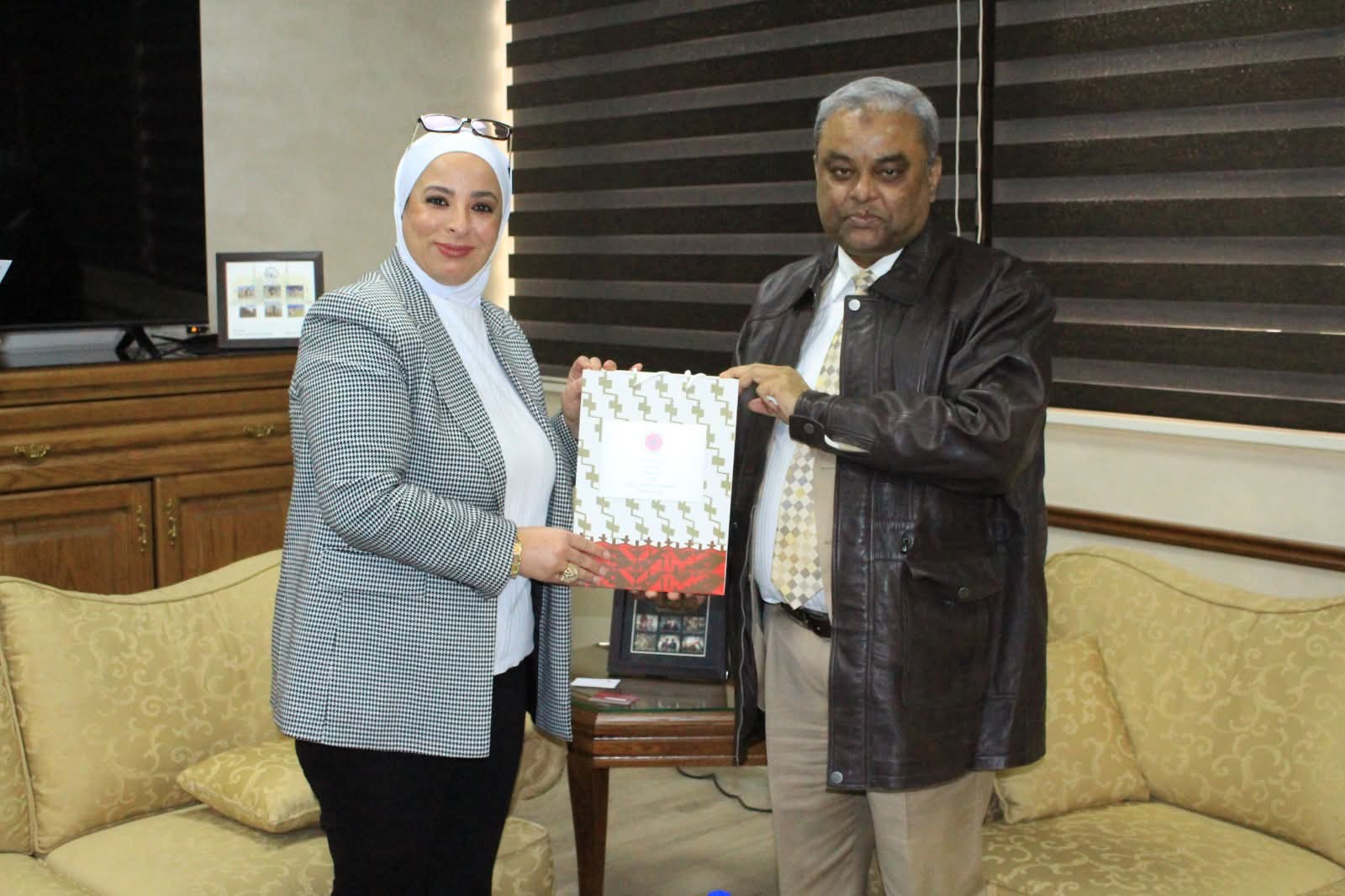حوار حول معايير ترتيب الدول طلال أبوغزاله
 أنباء الوطن -
أنباء الوطن - حوار حول معايير ترتيب الدول
طلال أبوغزاله
ينتشر في العالم الكثير من المعايير الاقتصادية التي تستخدم في ترتيب وتصنيف الدول ليتابعها الناس بهدف التعرف على اقتصاديات الدول سواء للمعرفة العامة، أو لعمل البحوث والدراسات الأكاديمية والتطبيقية أو للاستثمار في تلك الدول والتعامل معها بنشاط اقتصادي.
تتنوع هذه المعايير التي تكون عادة سلسلة زمانية لمتغير واحد أو لعدة متغيرات تدمج لإنشاء معيار موحد، فبعض المعايير يستخدم معدلات النمو الاقتصادية السنوية للوقوف على حركة النشاط الاقتصادي في البلد على مدى فترات من الزمن لمعرفة مستوى الأداء الكلي والتوجهات وأثر المتغيرات العالمية والإقليمية والمحلية.
قد يستخدم البعض معيار حجم النشاط الاقتصادي حسب الناتج المحلي الإجمالي للوقوف على حجم السوق الكلي في بلد ما مقارنة مع بلدان أخرى، فعلى سبيل المثال لم تكن الصين بين الدول العشر الأول في العالم من حيث حجم الاقتصاد عام 2008، وفي عام 2022 أصبح ترتيبها الثانية في العالم بعد الولايات المتحدة ومن المتوقع أن تصبح الأولى عالميًا من حيث حجم الاقتصاد.
وبينما تعتبر هذه المعلومة هامة من عدة نواحي، قد يرغب الباحث أو المراقب أن يقف على متوسط دخل الفرد وهنا يتم قسمة الناتج المحلي الإجمالي على عدد السكان في دول المقارنة لتختلف النتائج فنجد على سبيل المثال أن لوكسمبورغ ذات الناتج المحلي الإجمالي الصغير نسبيًا (85,51 مليون دولار) تصنف على أنها الأعلى من حيث دخل الفرد (الناتج المحلي الإجمالي مقسوم على عدد السكان) الذي وصل إلى 138 دولار للفرد في عام 2022 حسب تعادل القدرة الشرائية.
وإذا أردنا مقارنة القوة الشرائية للدخل أو الإنفاق بين الدول تقارن معدلات الإنفاق بمعدل الإنفاق في الولايات المتحدة كنقطة أساس، فترتفع القيمة الشرائية أو تقل بالمقارنة. وقد يستخدم البعض مؤشر "بيج ماك" (تكلفة شراء شطيرة بيج ماك برجر في شبكة مطاعم ماكدونالدز) الذي استحدثته وتستخدمه مجلة الإيكونوميست منذ 1986 لقياس ما إذا كانت أسعار الصرف في السوق لعملات البلدان المختلفة (78 دولة) مبالغ فيها أو مقومة بأقل من قيمتها. والطريف في هذا أن دقة الإنتاج لهذه الشطيرة تضمن إنتاجها بذات المدخلات والمخرجات في جميع الدول كمؤشر للأسعار في البلدان المختلفة، وحسب المؤشر فإن أغلى دولة بين 78 دولة مصنفة هي سويسرا (سعر شطيرة بيج ماك 6,71 دولار)، وأقلها غلاء هي فنزويلا (1,76 دولار).
يراقب آخرون معدلات تدفق الاستثمارات بالنسبة إلى الناتج المحلي الإجمالي مما يشير بشكل غير مباشر إلى سهولة ممارسة الأعمال وجاذبية بلد ما بالمقارنة مع بلدان أخرى وقدرة البلد أو طاقتها الإستيعابية للاستثمارات واستقرارها على مدى سنوات حيث أن عامل الاستقرار التشريعي ومؤسسية القرارات (وليس أحاديتها) هما يعتبران هامين جدًا لجذب الاستثمارات. وقد يرغب الباحث أن يطلع على تقرير ممارسة الأعمال مباشرة لمعرفة سهولة ممارسة الأعمال في بلد ما بالمقارنة مع البلدان الأخرى وربما يدعم قراره باستخدام معايير التنافسية ومعايير الحرية الاقتصادية المختلفة (يوجد العديد من معايير الحرية الاقتصادية تختلف في المدخلات والنتائج). وجميع هذه المعايير تقوم على مؤشرات اقتصادية مركبة وطرق قياسية وإحصائية بعضها موضوعي والبعض الآخر غير موضوعي (يتم عادةً من خلال إجراء استقصاء آراء مجموعات من الناس في البلدان المختلفة).
ولقد واجه معيار حجم الناتج المحلي الإجمالي ونموه الكثير من الانتقادات كمعيار للرفاه في بلد ما يحسب الناتج المحلي الإجمالي بعدة طرق منها:
مجموع الإنفاق الاستهلاكي والإنفاق الاستثماري والإنفاق الحكومي وصافي الصادرات (الصادرات مطروح منها الواردات) في عام واحد.
وقد يحسب على أساس مجموع ما ينتج في البلد من سلع وخدمات مطروحًا منه قيمة السلع والخدمات التي استخدمت في عمليات الإنتاج أي أنه مجموع الأجور والأرباح في ذلك العام أو ما يسمى بالقيمة المضافة.
كما قد يحسب من خلال مجموع الدخل الذي تحصلت عليه الموارد الاقتصادية (المواد الخام، رأس المال، العمالة، ريادة الأعمال) في عام واحد. وهي سبل حسابية يجب أن تؤدي إلى معيار واحد وهو (الناتج المحلي الإجمالي) حيث أن النظرية الاقتصادية تفترض تساوي الاستهلاك والدخل والإنتاج.
لا يعتقد الكثير من الاقتصاديين بقدرة معيار حجم الناتج المحلي الإجمالي أو دخل الفرد على قياس مدى الرفاهية في بلد ما ومقارنتها مع البلدان الأخرى فمثلًا، قد لا يقيس نمو الناتج المحلي الإجمالي وحجمه مدى الابتكار في البلد كما أنه لا يدل على نمو حجم الاقتصاد الحقيقي إذا ما اسْتخدم الباحث حجم الاقتصاد الأسمي؛ كما لا يقيس هذا المعيار ما يحدث من تلوث في البيئة؛ أو مدى عدالة توزيع الدخل في البلد؛ أو حجم الاقتصاد غير المنظم (يطلق مصطلح الاقتصاد غير المنظم على الأنشطة الاقتصادية التي لا تخضع للضرائب ولا تراقب من قبل الحكومة فلا تدخل ضمن الناتج القومي الإجمالي)؛ وحجم أو ازدياد رأس المال البشري؛ أو تنوع الاقتصاد ومدى تعقيد المنتجات؛ كما أنه لا يُمكن للمتابع له من التوقع والتّيقن من المخاطر المستقبلية؛ أو أن يقيس مدى السعادة في البلد؛ أو تغلغل الممارسات الاحتكارية؛ وغيرها الكثير من الأمور.
ورغم كل ذلك يوفر الناتج المحلي الإجمالي رقمًا معياريًا قياسيًا للإشارة إلى الحالة الاقتصادية للبلد، وهو ضروري لوضع السياسات الاقتصادية والتحليل الاقتصادي الكلي، كما أنه يتوافق مع المعايير والمقاييس الدولية للإنتاج، ويستخدم الناتج المحلي في غالب الأحيان مبادئ محاسبية دولية راسخة. لذلك ورغم ظهور معايير جديدة مثل تقرير السعادة العالمي، والذي يقيس مدى السعادة في كل دول العالم والذي انتجته دولة (بوتان)، فإن مقياس الناتج المحلي الإجمالي وهو المرجع الأول والأهم.
بالنتيجة، للباحث أن يختار أحد هذه المعايير، أو مجموعة منها، أو غيرها مما لم أذكره هنا، كل حسب احتياجاته سواء كان منتجًا أو مستهلكًا أو مستثمرًا أو واضع للسياسات. لاحظ أن مهمة الأخير تتطلب أن يعتمد على خليط من الأرقام والمعايير المقارنة، والنهج التحليلي، والحكمة والمنطق السليم لمعرفة من سيتأثر من المجموعات في البلد أو خارجه، وأين سيكون الأثر أعمق وأكثر ديمومة قبل اتخاذ القر
ار الاقتصادي.
Discussion on Criteria for Ranking Countries
Talal Abu-Ghazaleh
∙ Economic criteria is often utilized worldwide to classify countries and learn more about their economies, whether for general knowledge, to conduct academic and applied research and studies, or to invest in those countries and conduct business activities. Such criteria vary and usually include a timeframe of one or more variables combined to create a unified standard. Some criteria use annual economic growth rates to determine the movement of economic activity in the country over periods of time to know the level of overall performance, trends and the impact of global, regional and local variables.
∙ Some may use the criterion of the size of economic activity according to the gross domestic product (GDP) to determine the size of the total market in a country compared to other countries. For example, China was not even among the first ten countries in the world in terms of the size of the economy in 2008. In 2022, it ranked second after the United States, and it is now expected to rank first in terms of the size of the economy.
∙ While this information is considered necessary in several respects, researchers or observers may also wish to know the average income per capita. To do so, the GDP is divided over the number of residents in the countries being compared, so the results differ from one country to the other. For example, Luxembourg has a relatively small GDP (85.51 million dollars) and is classified as the highest in income per capita (GDP divided by population), which reached $138 per person in 2022, according to purchasing power parity.
∙ If we want to compare the purchasing power of income or spending between countries, the spending rates are compared to the spending rate in the United States as a base point. Hence, the purchasing value of other countries is measured as less or more in comparison. Some may use the "Big Mac" index (the cost of buying a Big Mac burger sandwich at McDonald's) as developed and used by The Economist magazine since 1986 to measure whether the exchange rates in the market for the currencies of different countries (78 countries) are overvalued or undervalued. Interestingly, the accuracy of the production of this sandwich guarantees its similar production in all countries and so it can be used as an indicator of prices in different countries. According to the index, the most expensive country among the 78 classified countries is Switzerland (the price of a Big Mac sandwich is $6.71), and the least expensive is Venezuela ($1.76).
∙ Others monitor the investment flow rates relative to the GDP, which indirectly indicates the ease of doing business, the attractiveness of a country compared to others, the country's capabilities or absorptive capacity for investments, and its stability over the years, as the legislative stability factor and the institutionalization of decision-making (and not their unilateralism) are very important for attracting investment. Researchers may want to directly look into the Business Report to find out the ease of doing business in any country compared to others. They may support their decision by using competitiveness and different criteria of economic freedom (many criteria of economic freedom differ in terms of inputs and results). These criteria are based on complex economic indicators and standard and statistical methods, some of which are objective, and others are subjective (usually by surveying the opinions of groups of people in different countries).
∙ The criterion of the size of the GDP and its growth has faced much criticism for its use to measure well-being in a country that calculates the GDP in several different ways, including:
1. The sum of consumer spending, investment spending, government spending, and net exports (exports minus imports) in one year.
2. It may be calculated based on the total goods and services produced in the country minus the value of the goods and services used in the production processes, i.e. the sum of wages and profits for that year or what is called the added value.
3. It may also be calculated through the total income obtained through economic resources (raw materials, capital, labor, entrepreneurship) in one year. They are mathematical methods that must lead to one criterion, which is (GDP) since economic theory assumes that consumption, income, and production are equal.
∙ Many economists do not believe in the ability of the GDP or income per capita as criteria to measure the level of well-being in a country compared to other countries. For example, the growth and volume of GDP may not measure the extent of innovation in a country, nor is it indicative of the growth of the real economy if the researcher uses the size of the nominal economy, nor does this criterion measure the pollution that occurs in the environment, or how equitable the income distribution in the country is, or the size of the unorganized economy (the term unorganized economy is applied to economic activities that are not subject to taxation and are not monitored by the government, so they are not included in the gross national product), or the size or increase of human capital, or the diversification of the economy and the complexity of the products. Furthermore, an observer cannot anticipate and determine future risks or measure the extent of happiness in the country, the penetration of monopolistic practices, and many other things.
∙ Despite all this, the GDP provides a standard figure to indicate a country’s economic situation. It is necessary for setting economic policies and macroeconomic analysis, as it is compatible with international production standards. The GDP often uses well-established international accounting principles. Therefore, despite the emergence of new criteria, such as the World Happiness Report, which measured the extent of happiness in all countries worldwide and was produced by (Bhutan), the GDP remains the first and most important reference.
∙ As a result, the researcher may choose one or more of these criteria. I did not mention here, each according to his needs, whether he is a producer, a consumer, an investor, or a policy maker. Note that the latter's task requires that he rely on a mixture of numbers and benchmarks, an analytical approach, wisdom and common sense to see which groups in the country or abroad will be affected and where the impact will be more profound and more lasting before making an economic decision.














